#linamarin
Text
Dhurrin is stored as a glycoside, but when consumed by herbivores, the glycoside is quickly hydrolyzed to sugar and an aglycone, which is very unstable and releases HCN (Figure 23.16). Cassava accumulates linamarin and lotaustralin as its major cyanogenic glycosides (see Figure 23.16).


"Plant Physiology and Development" int'l 6e - Taiz, L., Zeiger, E., Møller, I.M., Murphy, A.
#book quotes#plant physiology and development#nonfiction#textbook#dhurrin#glycoside#hydrolysis#sugar#aglycone#hcn#hydrogen cyanide#cassava#linamarin#lotaustralin#cyanogenic#amygdalin#sorghum
0 notes
Note
Hihi
Do you know any names similar to sypha?
Or otherwise names based on uncommon Botanical poisons/deadly plants? /Np -sparrow
Tox, Toxx, Toxy, Toxic, Toxin, Toxins
Poi, Pois, Poison, Poisic or Toxsin or Toxson (Poison + Toxic)
Harm, Harmed, Harmful, Harmless, Trick, Tricky, Trixy, Acid, Acidic, Acidix, Fatal, Mortality, Abnorm, Abnormal, Abno, Abnor, Chem, Chemi, Chemical
More stuff under cut TvT
Effect, Affect, Burn, Burned, Burning, Burnt, Burns, Sting, Stings, Bite, Bites, Bitten, Scratch, Scratched, Flame, Inflamed, Inflamay, Inflamation, Blis, Blist, Blister, Blisters, Blistex, Danger, Dangex, Dangerous, Endanger, Endangered, Inges, Ingest, Ingested, Smoke, Smokey, Smoky, Sym, Symp, Sympt, Symptom, Expo, Expose, Exposure, Exposed, Inter, Intern, Internal, Grad, Gradual, Gradu, Met, Meta, Metab, Metal, Metallic, Tallic,
Pretty, Pleasant, Pleasing, Pleased, Graze, Grazed, Clustered, Cluster, Clusters, Clust
Leaf, Leaves, Flower, Flowy, Petal, Petals, Tree, Forest, Forestry, Life, Bee, Stem, Petalx, Scent, Scented, Decor, Decorum, Decorate, Decorative, Fern, Seed, Seeds, Thorn, Thorns, Thorny, Prick, Prickle, Prickles, Pricked, Blood, Bleed, Drip, Spine, Spines, Poke, Stab, Stabby, Stabber, Ripe, Ripen
Oleander Nerium: Oleander, Nerium, Olean, Oleand, Leand, Neri, Olener, Neriander
The Tree of Death (Hippomane mancinella): Death, Mane, Manci, Nella, Nellamane, Manella, Sap, Phorbol, Phor
Snakeroot, White (Ageratina altissima): Snake, Root, Snakeroot, Snakey, Roots, Rooted, White, Whiteroot, Agera, Agertina, Altis, Altissima, Sima, Alti, Trematol, Trema, Matol, Trem
Castor Oil (Ricinus Communis): Castor, Oil, Ricinus, Communis, Commun, Munis, Rici, Ricin, Infern, Infernal, Crim, Crims, Crimson
Rosary Pea (Abrus precatorius): Rose, Rosary, Pea, Abrus, Precatorius, Abru, Abrux, Catorius, Cator, Precator, Torius, Jequirity, Jequir, Jeq, Abri, Abrin, Abrix, Trop, Tropi, Tropical
Misc Others:
Bell, Bella, Lily, Valley, Vall, Val, Sweet, Sweets, Shade, Nightshade, Bella, Donna, Belladon, Bellux, Bellix, Belladonna, Dracunculus, Dracun, Cunculus, Draculus, Dracu, Tannin, Alum, Allium, Alli, Aril, Arils, Ackee, Citric, Citrus, Citrix, Citrux, Cyan, Cyano, Cyanogen, Ano, Anogen, Urushiol, Shiol, Urush, Uru, Urus, Urushi, Urushio, Shio, Cyanide, Cyani, Yanide, Yanid, Nid, Nide, Cya, Cyide, Rash, Lacquer, Lacq, Lac, Myristicin, Myr, Myris, Myriat, Ticin, Ristic, Risticin, Rist, Myrist, Myri
Oxalic, Rhub, Rhu, Rhubarb, Barb, Sour, Abrin, Abri, Abrix, Saponin, Adonidin, Aconitic, Adonid, Adoni, Adonis, Adonix, Aconit, Aconi, Linamarin, Lina, Lin, Linam, Marin, Rin, Nitril, Nitriles, Nitri, Tri, Tril, Triles, Hydrin, Vol, Volatile, Tile, Agglutination, Agglutin, Glutin, Glu, Agglu, Nephrotoxicity, Toxicity, Nephro, Corrosion, Corrosive, Corro, Wolfsbane, Monkshood, Bane, Aconitine, Nitine, Acon
4 notes
·
View notes
Text

🐱🌱 Cat Nutrition Alert: Lima Beans - Yay or Nay? 🌱🐱
Hey, cat enthusiasts of Tumblr! Just came across this enlightening read on PawPatrol Post about our feline friends and lima beans. It turns out that while lima beans are nutrient-dense for humans, they're not the ideal snack for cats. 🤔
Lima beans contain protein and fiber, which sound good, right? But there's a catch. Cats are obligate carnivores, so their protein needs are best met with animal-based sources. Plus, raw lima beans can be toxic due to linamarin, which turns into hydrogen cyanide. Cooking reduces this risk, but it's still a gamble. 🚫
So, what's the verdict? While a small, cooked portion of lima beans probably won't harm your cat, it's not an optimal food choice for their carnivorous diet. It's better to stick to meat and cat-specific treats for your furry buddy's health. 🥩🍗
Curious to learn more? Dive into the full article here: Can Cats Eat Lima Beans? Let's keep our purring pals both happy and healthy!
2 notes
·
View notes
Text
Is cassava dangerous?

Cassava, one of the three major root crops, is known as the "King of Starch" and ranks as the sixth-largest food crop globally. In the TV series "Empresses in the Palace," there is a mention of cassava starch causing poisoning. So, what's the story behind it? Well, cassava contains compounds called linamarin and lotaustralin, which, when hydrolyzed, release free hydrogen cyanide. Prolonged consumption of fresh cassava or improperly processed cassava products can lead to chronic cyanide poisoning.
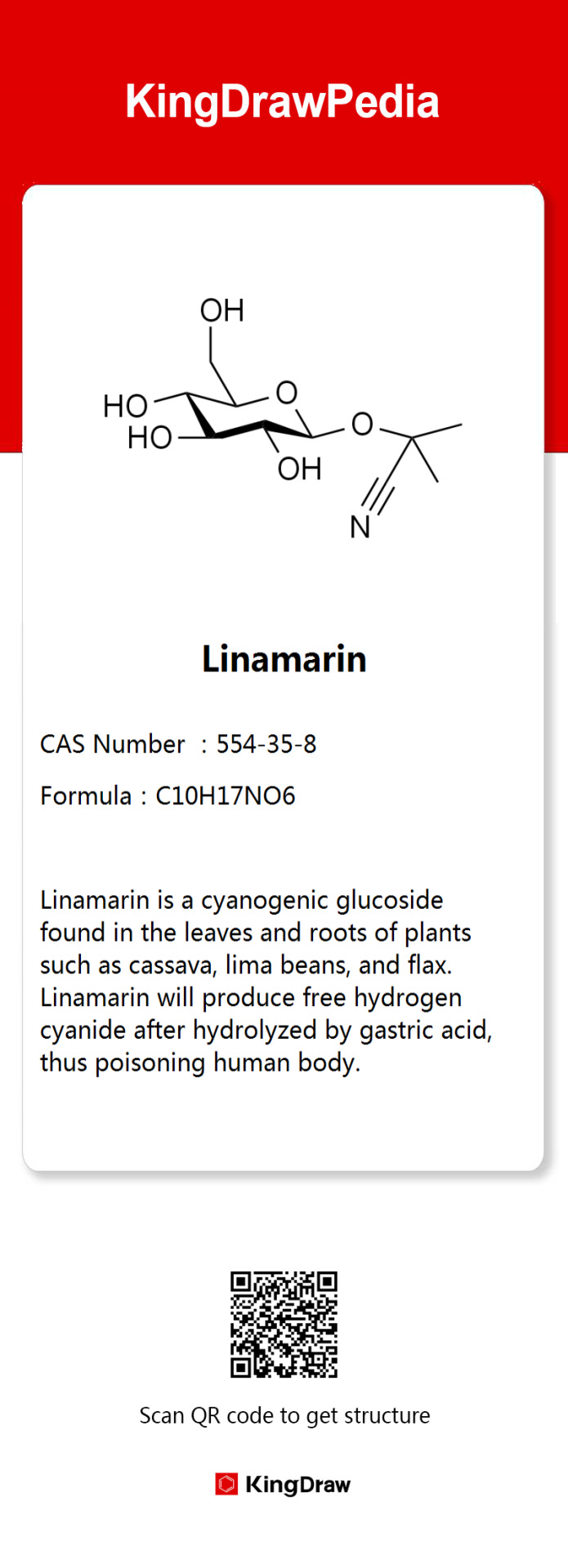

5 notes
·
View notes
Text
5 BEST THINGS TO DO IN FINLAND
Finland is a land of great contrasts. In the north, the land is blanketed in snow, and the air is crisp and clean. In the south, the sun shines, and the landscape is lush and green. No matter what time of year, Finland always has something to do. Know the best things to do in Finland here.
HERE IS THE LIST OF THINGS TO DO IN FINLAND
One of the best ways to experience Finland is by enjoying its outdoor activities. Finland is a nature lover’s paradise with its pristine forests, lakes, and mountains. Hiking and camping are popular activities in Finland, and there are plenty of trails to explore. For those looking for a more challenging hike, the Finnish mountains offer some of the most scenic views in Europe.
Santa Claus Village
Sibelius Monument
Linamarin
Museum of Contemporary Art Kasama
Temppeliaukio Church
there are many things to do in Finland, and the country has something to offer everyone. From the stunning natural beauty, vibrant cities, and unique culture, Finland is a great place to visit. Thanks for reading, and visit again here the Journey Index.
0 notes
Text
Keten tohumu (Linium usitatissimum)
Bitki özellikleri: 50-70 cm yüksekliğe ulaşan, mavi çiçekli bir kültür bitkisidir. Keten tohumu ve keten lifi elde etmek için yetiştirilir. Baharatçılardan satın alınabilir.
Bileşim: Bitkinin tedavi amaçlı kullanımında öncelikli yeri olan, bol miktarda müsilaj. Müsilajın etkinliğini arttıran sabit yağ. Çok az miktarda hidrosiyanik içeren linamarin. Linamarin bir glikozittir. Hidrosiyanik ise…
View On WordPress
0 notes
Text
UBI KAYU tak naikkan GULA DARAH?
Kajian yang disiarkan dalam jurnal ‘The Lancet’ menunjukkan tiada seorang pun daripada 1,381 peserta yang mengambil ubi kayu setiap hari mengidap diabetis.
Ubi kayu adalah sumber yang kaya kanji rintang (9.7 g/100g).
Kanji rintang bertindak seperti fiber.
Tepung ubi juga tinggi kanji rintang (0.56 to 1.1%)
Pengambilan kanji ini bagus untuk kesihatan usus, tidak meningkatkan paras gula dalam darah dan menjadikan seseorang itu kurang risiko obesiti.
Tetapi, ubi kayu mengandungi bahan linamarin
Usus besar manusia akan tukarkan bahan linamarin kepada cynide, sejenis gas beracun.
Pendedahan cynide yang tinggi boleh menyebabkan beguk dan masalah saraf.
Kajian oleh UPM yang mendapati linamarin mempunyai sifat antikanser, tetapi kesan negatif bahan ini ke atas haiwan atau manusia masih belum dikaji lagi.
Cara yang paling baik untuk kurangkan kesan toksik bahan linamarin adalah dengan cara memarut ubi kayu. Ini kerana bahan linamarin akan ditukarkan kepada cynide dan akan hilang di udara pada suhu bilik
Justeru, makanlah ubi kayu mengikut cara yg betul dan ikut kadarnya.
#DrSuriRoowi Ph.D KMN
Principal Scientist
Foto: Mingguan Wanita

0 notes
Text
Poisonous herbs in culture
I saw a really helpful post going around about poisonous herbs that should be avoided by witches, and any other person really. I would like to give my insight.
I looked up some of the herbs mentioned by the post on Wikipedia, and discovered that a good portion of them are used by certain cultures, be it in jewelry, food or medicine. What happens is that people process the seeds/roots/leaves/fruits/flowers until the toxins are rendered innocuous.
Now, I'm not trying to invalidate the poisonous herbs post: It really is an important PSA to witches, and I will keep the hell away from those herbs! What I am adding here is a cultural point view. Remember that there are people around the world who know their way around poisonous plants.
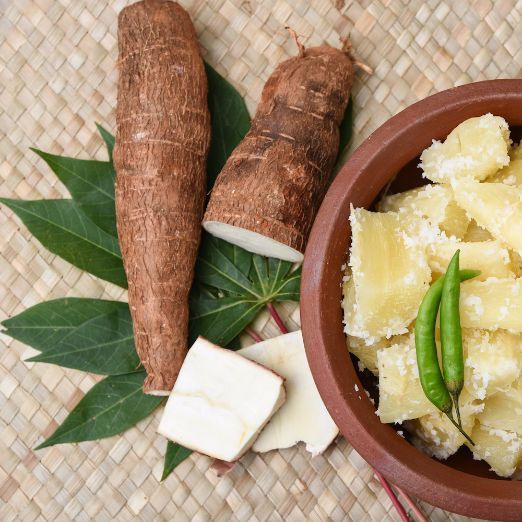
While reading the Tumblr post, I was eating fried yuca/cassava (mandioca/macaxeira) - Manihot esculenta - and remembered an interesting fact about this plant that is so important to Latin American countries like mine. Certain Yuca species can be extremely poisonous.
Yet, here I am, eating this tuberous root. How is that possible?
Cassava contains linamarin and lotaustralin, that releases hydrocyanic acid with hydrolysis. The amount of those toxins varies from specimen to specimen, depending on the conditions of the environment they were planted on. "Mandioca brava" is how we call the most toxic type in my language, a bitter root high on cyanide. DON'T EVER ATTEMPT TO EAT RAW OR POORLY COOKED CASSAVA. Cyanide can be lethal in just a couple of hours. In long term, poorly cooked cassava can cause pancreatic diseases.
This plant is dangerous especially if it was harvested from a dry and hot place. A classic book from Brazilian literature, "Vidas Secas", portrays the death of one of the characters after he eats a raw root of yuca out of starvation.
To safely eat yuca, it must be cooked properly. For example "Maniçoba", which is a traditional indigenous dish, is prepared with the leaves of Manihot pseudoglaziovii, a resilient type of yuca that's also extremely toxic. To become edible, the leaves must be grounded and left to cook for one whole week.
Now you must be asking, why do people use such toxic herbs on their lives, even though they know they are dangerous?
I can't speak for every case, but at least here in Brazil, that's the only thing we had avaiable in the past, and now it's ingrained in our culture.
Yuca has always been a crucial element of indigenous people's diet. After europeans invaded South America, they realized that many of the herbs they were used to eating didn't thrive in the hot tropical weather of this part of the world. The solution was to adopt the native plants in their own diet. Yuca became flour, cake, soup, tapioca...
The most toxic type, Maniçoba, that requires an impressive 1 week of cooking to become edible, was the only alternative available to slaves, during the colony. Beans were expensive, only rich slave owners were able to afford them.
With the leftover meat that farmers discarded (swine ears, nose, tail, etc) and abundant, but toxic, Maniçoba, slaves prepared this traditional and nutritional dish, without which they would probably starve and become sick.
Maniçoba became part of Brazilian's culinary and is still a crucial source of nutrition to many people living in the North of the country.
Cassava, just like other toxic herbs, have a lot of potential IF DEALED WITH RIGHT. This is not a "hey, it's ok to pick toxic herbs" post. This is just a small insight in how some cultures deal with them.
And, from the point of view of a witch, I find fascinating how a herb can either kill you or save you, the only changing factor being the knowledge of the person manipulating it.
That being said, research research and research before collecting any herbs! And by researching I mean researching on real botany books/articles written by actual scientists instead of witchcraft or Wicca guides.
But also learn about the traditions surrounding your local poisonous plants. How and why did people used that in the past? And now, do those poisonous herbs have any scientific value to researchers? Knowing the safe components or products originated from them can be useful to your craft.
Stay safe
#witch#witchy#witchcraft#witchblr#herbs#poisonous herbs#poison#yuca#mandioca#Brazil#green witch#kitchen witch#culture#folklore#poison herbs#plants#green witchcraft
379 notes
·
View notes
Text
Mi Belleza
Mi belleza
Foto: Lina Marin
La belleza frente a mi.
Que el amor sea el camino en cualquier estado de tu vida.
Hacer de nuestro diario vivir un ritual es una bendición para el alma, para el cuerpo y para el cambio que estemos buscando dentro de nuestro ser interior.
Nuestro cambio nos lleva a sanarnos a nosotros mismos; pero para ello, tenemos que renunciar a vicios y a círculos viciosos, a…
View On WordPress
0 notes
Text
Cyanide Toxicity of Freshly Prepared Smoothies and Juices Frequently Consumed | Chapter 02 | Current Trends in Food Science Vol. 1
Introduction: Humans are exposed to low levels of CN- on a daily basis due to vehicle exhaust, water sources, foods, and even cigarettes smoke. Many of these raw and natural foods such as seeds and nuts have become a large part of human nutrition with the “eat raw and natural” push over the past decade with a reported 40% of adults consuming raw seeds and nuts daily. Most forms of CN- in health foods originate from amygdalin contained in apple seeds and almonds or, linamarin contained in flax seeds. Many of these items are used in the health food industry (e.g., fresh smoothies and juices) as a selling point for improving one’s fitness, vigor, and strength as they are a good source of omega-3 fatty acids, lignans, and fiber.
Aims: This study evaluated popular fruit and vegetable smoothies and juices marketed as raw and natural. Data showed that some items contained the presence of cyanide at various levels.
Study Design: There were eleven (11) popular varieties of drinks analyzed for total cyanide (TCN). These drinks contained juiced raw vegetables and fruits, flax seeds, whole apples with seeds, raw almond milk, and pasteurized almond milk as ingredients.
Place and Study Duration: Sampling was conducted in Las Vegas, Nevada where items were collected from health food eateries during the summer of 2017.
Methodology: Brief, fifty milliliters (mL) of a homogenized smoothie and juice drink and 1 gram of flax seeds were subjected to the above-referenced methods for sample preparation per USEPA Methods 9012B (digestion) followed by USEPA method 9014 (colorimetry).
Results: Data indicated the highest TCN was identified in drinks containing raw flax seeds, followed by unpasteurized raw almond milk, then fresh whole apple juice. It was found that no TCN was present in drinks containing none of the above mentioned ingredients (e.g. flax seed, raw almond milk) or pasteurized ingredients.
Conclusion: Research establish that TCN is present in smoothies and juices containing, highest to lowest, raw flax seeds, fresh whole apples, and/or unpasteurized almond milk. Concentrations were detected as high as 341 μg L-1 in commercially available smoothies containing vegetables, raw flax seeds, and almond milk and fruits. Smoothies containing raw vegetables, fruits, unpasteurized almond milk, and no flax seeds contained 41 ug L-1 TCN, while similar smoothies with pasteurized almond milk contained negligible to 9.6 ug L-1 CN-. Unpasteurized almond milk and raw flax seeds were the major sources of TCN in drinks. With the increased demand for raw and natural foods, there is a potential sublethal exposure of TCN by consumers. Findings have also shown that TCN is present in smoothies and juices containing raw flax seeds, fresh whole apples, and/or unpasteurized almond milk. Potentially any fruit or vegetable containing cyanogenic glycosides, linamarin and amygdalin, may be contributing to TCN content in health food drinks such as smoothies. Cyanide from linamarin has been linked to a variety of health issues such as diabetes mellitus, neurological deficits, sensory or memory impairments, and weight gain through damage to the adrenal gland function. Moreover, thiocyanate, a metabolic by-product of CN-, has been tied to goiter growth and hypothyroidism. The presence of CN- in these drinks do not pose an acute threat of poisoning; however, this study suggests that a diet consisting of regular raw flax seeds, fresh whole apples, and/or unpasteurized almond milk, smoothie intake may result in chronic sublethal exposure to TCN. The average adult can mitigate CN- toxins consumed in their daily diets. Women who may become pregnant, currently pregnant and people with developing or, compromised immune systems should monitor or restrict their intake of drinks containing raw flax seeds and almonds or unpasteurized almond milk. Finally, additional research is required to fully understand the possible health effects that exist in unprocessed fresh foods.
Author(s) Details
A. Baker
Department of Life Sciences, University of Nevada, Las Vegas, NV 89154, USA.
M. C. Garner
Department of Physical Sciences, College of Southern Nevada, N. Las Vegas, NV 89030, USA.
K. W. Kimberley
Department of Biological Sciences, College of Southern Nevada, Las Vegas, NV 89146, USA.
D. B. Sims
Department of Physical Sciences, College of Southern Nevada, N. Las Vegas, NV 89030, USA.
J. H. Stordock
Department of Physical Sciences, College of Southern Nevada, N. Las Vegas, NV 89030, USA.
R. P. Taggart
Department of Physical Sciences, College of Southern Nevada, N. Las Vegas, NV 89030, USA.
D. J. Walton
Department of Physical Sciences, College of Southern Nevada, N. Las Vegas, NV 89030, USA.
Read full article: http://bp.bookpi.org/index.php/bpi/catalog/view/79/1071/757-1
View Volume: https://doi.org/10.9734/bpi/ctfs/v1
0 notes
Photo
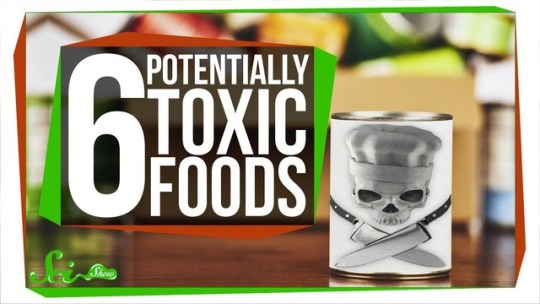
6 Foods That Are Toxic If You Prepare Them Incorrectly
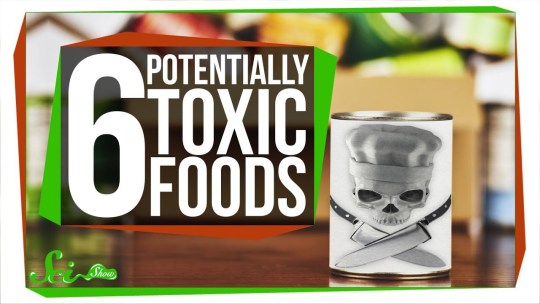
youtube
We prepare a lot of our food to make it safer to eat, but a piece of bread probably won’t hurt you if it’s not made correctly. These six foods, on the other hand, definitely can.
Hosted by: Stefan Chin
SciShow has a spinoff podcast! It’s called SciShow Tangents. Check it out at https://www.scishowtangents.org
———-
Support SciShow by becoming a patron on Patreon: https://www.patreon.com/scishow
———-
Dooblydoo thanks go to the following Patreon supporters: rokoko, Alex Hackman, Andrew Finley Brenan, Lazarus G, Sam Lutfi, D.A. Noe, الخليفي سلطان, Piya Shedden, KatieMarie Magnone, Scott Satovsky Jr, Charles Southerland, Patrick D. Ashmore, charles george, Kevin Bealer, Chris Peters
———-
Looking for SciShow elsewhere on the internet?
Facebook: http://www.facebook.com/scishow
Twitter: http://www.twitter.com/scishow
Tumblr: http://scishow.tumblr.com
Instagram: http://instagram.com/thescishow
———-
Sources:
https://cfaes.osu.edu/news/articles/chow-line-dry-kidney-beans-need-be-boiled
https://www.ncbi.nlm.nih.gov/pubmed/16441922
https://www.sigmaaldrich.com/content/dam/sigma-aldrich/docs/Sigma/Product_Information_Sheet/2/l8629pis.pdf
https://www.sciencedaily.com/releases/2003/05/030514080833.htm
https://www.frontiersin.org/articles/10.3389/fpls.2017.00220/full
https://onlinelibrary.wiley.com/doi/full/10.1111/j.1541-4337.2008.00064.x
http://www.scielo.br/scielo.php?script=sci_arttext&pid=S0104-79301996000100002
https://www.ncbi.nlm.nih.gov/pubmed/21045121
https://www.ncbi.nlm.nih.gov/pmc/articles/PMC3125150/
https://www.ncbi.nlm.nih.gov/books/NBK431101/
https://www.seriouseats.com/2013/01/jamaica-eating-ackee-and-saltfish-the-n.html
https://www.ncbi.nlm.nih.gov/pmc/articles/PMC3153292/
https://www.researchgate.net/publication/317237827_Oxalic_AcidOxalates_in_PlantsFrom_Self-Defence_to_Phytoremediation
https://www.nationalgeographic.com/people-and-culture/food/the-plate/2016/05/18/does-rhubarb-deserve-its-killer-reputation/
https://www.ncbi.nlm.nih.gov/pubmed/8153790
https://www.cdc.gov/mmwr/preview/mmwrhtml/00001269.htm
https://www.ncbi.nlm.nih.gov/pubmed/2526711
https://motherboard.vice.com/en_us/article/jp578p/the-science-behind-the-deepest-itch-poison-oak
https://www.wemjournal.org/article/S1080-6032(06)70299-X/fulltext
https://www.theguardian.com/science/blog/2018/jan/17/tetrodotoxin-the-poison-behind-the-japanese-pufferfish-fugu-scare
https://www.theguardian.com/lifeandstyle/2009/jan/29/blowfish-how-to-cook-japan
https://www.ncbi.nlm.nih.gov/pmc/articles/PMC2857358/
https://pubchem.ncbi.nlm.nih.gov/compound/tetrodotoxin
https://www.ncbi.nlm.nih.gov/pmc/articles/PMC3564078/
Images:
———-
https://commons.wikimedia.org/wiki/File:Phytohemagglutinin_L.png
https://commons.wikimedia.org/wiki/File:Lotaustralin_structure.svg
https://commons.wikimedia.org/wiki/File:Linamarin.svg
https://commons.wikimedia.org/wiki/File:Waste_not_want_not_WWI_poster.jpg
https://commons.wikimedia.org/wiki/File:Food_is_a_Munition_of_War_-_Don%27t_Waste_It_Art.IWMPST20687.jpg
https://commons.wikimedia.org/wiki/File:Victory-garden.jpg
being published on http://mybecause.com/6-foods-that-are-toxic-if-you-prepare-them-incorrectly/
#Ackee#anacardic acid#Cashews#cassava#cyanogenic glycosides#Education#green#hypoglycemia#hypoglycin A#kidney beans#Konzo#learn#lectin#linamarin#lotaustralin#methylene cyclopropyl acetic acid#oxalic acid#phytohemagglutinin#Pufferfish#Rhubarb#science#SciShow#tetrodotoxin#toxic food#urushiol
0 notes
Text
Lein / Flachs
Lein / Flachs - eine wunderschöne und sehr nützliche Pflanze
#hubertsfeinesfutter
#phytoAbisZ
#ernährung #fütterung
Linum usitatissimum = äußerst nützlicher Lein
Heilpflanze des Jahres 2005
Familie: Linaceae
Verwendet werden:
Samen – Lini semen
Geschmack mild ölig, beim Kauen schleimig
Inhaltsstoffe:Ballaststoffe (26%) davon Schleimstoffe, Rohfaser, fettes Öl (Glyzeride ungesättigerter Fettsäuren: Linolen-, Linol-, Oleinsäure), cyanogene Glykoside (Linamarin, Linustatin…), Rohprotein, Mineralstoffe,…
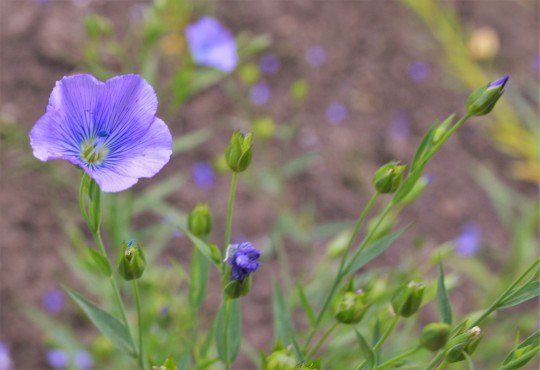
View On WordPress
0 notes
Text
Chemical Killing Weapon in World War II

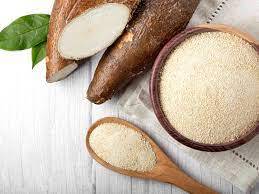
Manihot esculenta, commonly called cassava, is a root vegetable. Like potatoes and yams, it is a tuber crop. People can also eat the leaves of the cassava plant. However, the roots, stems and leaves of cassava contain a toxic substance called linamarin, which are toxic to ingest. The reason is that linamarin produces free hydrogen cyanide after hydrolyzed by gastric acid, thus causing human poisoning.
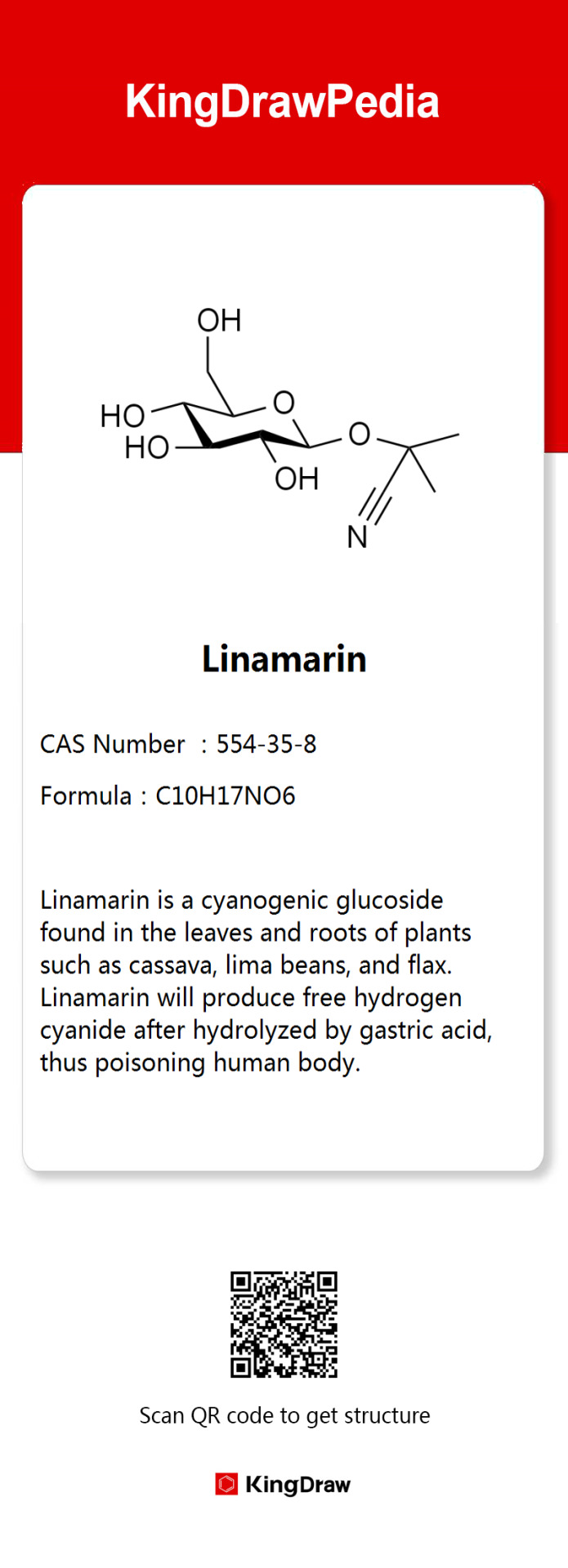
What is hydrogen cyanide?
One thing to tell you ---During World War II, Nazi Germany used it (trade name is Zyklon B) as the chemical killing weapon in the gas chambers, killing millions of Jews! The main manifestations of mild poisoning were chest tightness, palpitation, rapid heart rate, headache, nausea, vomiting, and blurred vision; Severe poisoning mainly presents deep coma, paroxysmal convulsions, and finally shock, respiratory failure, and death.
Facebook: KingDraw_chem
FB group: KingDraw Q&A
Twitter: KingDraw_chem
YouTube: KingDraw
Medium: KingDraw
Quora: KingDraw
You can also email [email protected] for more software tutorials :)
#kingdraw#chemistry#science#molecule#organicchemistry#organic#compound#dailychem#chem#software#did you know#ww2#chemistry class#organic chemistry#study blog#studywithme#studyblr#study motivation
3 notes
·
View notes
Text
Juniper Publishers-Open Access Journal of Environmental Sciences & Natural Resources

Comparative Evaluation of the Cyanide and Heavy Metal Levels in Traditionally Processed Cassava Meal Products Sold Within Enugu Metropolis
Authored by Ezeh E
Abstract
Studies were carried out to comparatively evaluate the cyanide and heavy metal levels in traditionally processed cassava meal products (abacha, akpu and garri) sold within Enugu Metropolis using relevant analytical procedures and instrumentation. The mean levels of cyanide in the abacha, akpu and garri samples sold within Enugu metropolis were, 11.07, 6.84 and 9.22ppm respectively. Only the mean cyanide levels in abacha samples sold within the metropolis was above the maximum safe intake limits of 10ppm in cyanide containing food/feed for human and animals. The levels of cyanide in the samples were statistically significant (p < 0.05). Cd, Zn, Cu, Pb and Fe were all detected at non-toxic levels in the traditionally processed cassava meal product sold within Enugu metropolis. The mean levels of the metals in akpu were significantly higher than in the other studied samples sold within the metropolis (p < 0.05). Varying periods of fermentation, soil chemistry and ecology was attributed to be responsible for the varying levels of cyanide in the samples. Contamination during processing and in the soil where the cassava were harvested could have significantly influenced the levels of the studied heavy metals in the samples.
Keywords: Heavy Metal; Cyanide; Akpu; Garri; Abacha
Theoretical Basis and Methodology
Cassava (Manihot esculentacrantz) is a tuberous root belonging to the surphorbiaceae family. Due to its high adaptability to a variety of environmental conditions, cassava is considered an important nutritive source [1-30]. It is the third largest source of carbohydrates after rice and maize, being an important dietary component for populations worldwide [16]. Cassava is an all season crop of the tropics and ranks among the top ten food crops in the world [15]. Today, Africa is the largest producer of cassava referred to as the bread of the tropics, with Nigeria leading with nineteen percent of global market share [10]. It holds the position as a primary food security crop in Africa due to its resistance to drought and disease, flexible planting, harvest cycles and tolerance of low-quality soils [17]. Cassava is a tuber crop that is propagated by stem and matures between 6-12 months of planting depending on the variety [22]. It supplies about 70% of the daily calorie of over 50 million people in Nigeria [8]. Edible part of fresh cassava root contains 32-35% carbohydrate, 2-3% protein, 75-80% moisture content, 0.1% fat, 1.0% fibre and 0.70-2.50% ash [29-31].
According to [14] fresh cassava roots cannot be stored for long because they rot within days of harvest since they are bulky with about 75% moisture content with the roots and leaves containing varying amounts of cyanide which is toxic to humans. Therefore, cassava must be processed into various forms in order to increase the shelf-life of the products, facilitate transportation and marketing, reduce cyanide content and improve palatability [32-36]. Cassava can be processed into a number of products both traditionally and industrially [13]. Depending on the product, the methods involved in processing cassava include, peeling, cutting, and submerged fermentation, dewatering, sieving, frying, washing, frying, cooking and pounding [34]. Some commonly processed cassava meals include chips, abacha, fufu, lio-lio, tapioca, cassava flour and garri [21]. For instance, abacha is a traditionally processed by first harvesting and peeling the cassava and was quickly followed by cooking the tubers to soften for a period of time. The cooked cassava will be sliced and soaked in water over night. After about 12hours of soaking, the cooked and sliced cassava will be washed thoroughly with water until it become edible [21]. According to 33, the cassava product called akpu is usually prepared by harvesting and pealing cassava tubers and then washing them into a container where it will be fermented with water for atleast seven days to ten days. It is then removed from the fermented water and mashed in a sieve bag that drains out water when compressed/ swizzed. The mashed cassava in the sieve bag can be cooked and pounded into gelatinized pastes called fufu [30]. Stated that the traditional production of garri involves peeling of the cassava tubers and grating it into fine pulp. Next the pulp is transferred into lessian sacks and compressed to drain and ferment for days. The fermented and relatively dewatered pulp will be sieved to remove fibrous materials and palm oil could be added according to preference. Roasting is carried out in large frying pan to yield gelatinized granules of reduced moisture content which can be stored for relatively long-time. Palm oil is added to cassava mash to give the garri an aesthetic value and source of vitamin A.
Though cassava mealed products such as fufu, cassava and abacha contain a list of mineral elements in trace amounts which are of good use to the body, May also contain a number of heavy metals. These heavy metals sometimes are accumulated in the cassava through the soil. Heavy metals are environmental contaminants with the capability of finding their way into the food we eat and causing human health problems. They are given special attention throughout the world due to their ubiquitous nature and toxic effects even at low concentrations [11]. Heavy metals contamination of the environment and food materials are major source of concern. In humans, heavy metals are taken up through consumption of heavy metal laden food, water and inhalation of heavy metal contamination of heavy metal contaminated air [24]. Heavy metals such as Cu and Zn are essential for normal plant growth and development since they are constituents of many enzymes and other proteins [36]. Elevated concentrations of both essential and non-essential metals in the soil can lead to toxicity symptoms and accumulation in parts of plants [18]. Plants growing within the heavy metals contaminated areas usually take up heavy metals by absorbing minute deposits on the parts exposes to the air in the polluted environments and during uptake of contaminated soils [37-39]. Analysis of processed cassava flour has revealed the presence of poisonous metals such as lead, arsenic and cadmium [5].
Cadmium, chromium and nickel are carcinogenic [28]. Lead causes neurological impairment and central nervous system damage by its ability to mimic and inhibit the actions of calcium in its neurotransmission function [26]. Some heavy metals such as cobalt, copper, iron, manganese and zinc are essential macro elements for living things however; they are toxic at high concentrations [4]. Cassava contains the cyanogenic glucosides, linamarin and lotaustralin which are hydrolyzed after tissue damage by the endogenous enzyme, linamarase to the corresponding cyanolydrin and further to hydrogen cyanide (HCN) [9]. The hydrogen cyanide is responsible for the chronic toxicity when inadequately processed cassava products are consumed by humans and animals for prolonged periods [8]. During processing, cassava tubers are disrupted and cyanogenic glucosides is brought in contact with p – glucosisases and a-hydroxynitrile lyases, engendering and hydrolysis of cycinogenic glucosides into cyanolydrins, hydrogen cyanides and ketones [8]. Based on the wide consumption of cassava products as everyday diet in many Nigerian homes, studies were carried out to comparatively evaluate the cyanide and heavy metal levels in traditionally processed cassava meal products (garri, akpu and abacha) sold within Enugu metropolis.
Materials and Method
Sample Collection
Samples of abacha, akpu and garri were obtained at various market outlets within Enugu metropolis.
Elemental Analysis
The samples were oven-dried at 100oC for 3hrs. Thereafter, the samples were ground into a fine powder and 0.5g each was weighed into a 100ml volumetric flask. Thirty mililitres (30ml) of mixed concentrated acid (650ml nitric acid + 80mlperchloric acid+20ml suphuric acid) were added and the mixture heated at 150oC until dense white fumes of nitric acid escaped. Thereafter, it was cooled and brought to a volume of 50ml using de-ionized water in a 50ml volumetric flask. The resulting solution was analyzed with atomic absorption spectrometer (AAS model Pa 990). The spectrometer was standardized using standard solutions of the elements analyzed and distilled water was acidified and aspirated to zero using air acetylene for Cu, Cd, Zn, Pb and Fe. The absorption radiation of the elements produced from the metals at various wavelengths was measured using the atomic absorption spectrometer.
Statistical Analysis
All data were expressed in mean and standard deviation. The data was subjected to one way analysis of variance (ANOVA) using SPSS version 18.0 at 5% level of confidence.
Hydrogen Cyanide Determination
This was carried out using the method adopted by [31]. 2g each of the samples were made into paste in 20ml of distilled water in a corked conical flask overnight after which extraction took place. The extract was filtered and the filtrate was used for the analysis. 1ml of this was put in a test-tube, followed by the addition of 4ml alkaline picrate solution. This was heated in water at 90oC for 5min. After the colour development, the absorbance value of each sample was determined at 490nm using spectrophotometer (AAS 6200 SHIMADZU). The actual amount of cyanide was extrapolated from the standard cyanide was extrapolated from the standard cyanide curve. A blank reagent from 4ml picrate solution and 1ml distilled water were also prepared to standardize the spectrophotometer before measuring the absorbance. Table 1 shows that the mean levels of cyanide in abacha, akpu, and garri sold within Enugu metropolis were, 11.07, 6.84 and 9.22ppm respectively. These cassava meal products (akpu, garri and abacha) were traditionally processed using different methods, with the sole aim of reducing the cyanide level, improve storability, convenience and palatability of the meal products. The order of decrease of cyanide levels in the sample were, abacha>garri>akpu as shown in Figure 1. The mean levels of cyanide in the abacha samples sold within Enugu metropolis was above the maximum safe limit of 10ppm in cyanide contaminating food/feed for humans and animals [38]. Abacha is a ready-to-eat cassava meal product widely consumed in many Nigerian homes, so to have found the cyanide level above the recommended limit in this edible food/snack is of public health concern. According to [29], fermentation of cassava tubers is a major determining factor in achieving a significant reduction in cyanide content in cassava meal products [33]. Stated that the disparity in cyanide content in cassava meal products is as a result of difference in ecological factors and soil chemistry in the various places were the cassava is grown [8]. Stated that key component of soil such as potassium, calcium and magnesium adversely affected the biosynthesis and translocation of cyanide to storage organs, which invariably contributed to inconsistencies in cyanide content in the plant tissues.
WHO STD-10.00ppm
Another reason that can be attributed to the high level of cyanide in the abacha and garri samples sold within Enugu metropolis can be attributed to the short period of fermentation employed by the processors. According to [12], HCN is responsible for tissue hypoxia. Chronic exposure to HCN causes neurological, respiratory, cardiovascular and thyroid defects. Symptoms of this may be seen less than one minute following ingestion of cyanide [19].
Cadmium
Table 2 shows that the mean levels of cadmium in the abacha, akpu and garri sold within Enugu metropolis were, 0.084, 0.206 and 0.135ppm respectively. The order of decrease of the metal in the samples were,akpu>garri>abacha (Figure 2) Statistical analysis of cadmium levels in the samples shows significant difference at p < 0.05. According to [39], plants growing within heavy metal contaminated areas usually take-up heavy metals by absorbing minute deposits on the parts exposed to air in the polluted environments and during uptake from contaminated soils.
The difference in soil chemistry from which the cassava tubers were processed into the sample products were grown, heavy metal contamination levels of such soils, contamination from water used during the fermentation process and general processing environment could have significantly influenced the levels of cadmium and other metals in the samples. The mean concentrations of cadmium in the samples were within recommended permissible limits for a solid food product [38] Chronic exposure to cadmium could cause nephrotoxicity in humans, mainly due to abnormalities of tubular re-absorption [27,28]. Higher values of 0.55 0.002mg/kg, for cadmium in cassava tubers sold in major markets in Benue State, Nigeria, than obtained in this research [13]. Did not detect cadmium in cassava flour sold in Anyigba market, Kogi State, Nigeria.
Zinc
Table 2 shows that the mean levels of zinc in abacha, akpu and garri sold within Enugu metropolis were, 4.82, 6.76 and 5.49ppm respectively. The mean concentration of zinc in the cassava meal samples were statistically significant (p < 0.05) and within the established recommended maximum safe limits. The order of decrease of zinc in the sample were, akpu>garri>abacha. The mean values of zinc obtained for the cassava meal products in the research compared very well with 5.660.31mg/kg reported by [24] for the metal in garri sold in some major markets in Yenegoa metropolis, Nigeria. Zinc is one of the major essential elements required by the human system [23]. Zinc plays several functions in the human body, such as wound healing, blood clotting, and proper thyroid function, maintenance of vision, bone mineralization, fetal growth, sperm production and cell growth. High concentrations of zinc in the body induce several health effects such as vomiting, gastrointestinal irritation, weakness, anaemia and loss of hair [2].
Copper
Table 2 shows that the mean levels of copper in abacha, akpu and garri sold within Enugu metropolis were, 1.34, 2.81 and 1.65ppm respectively. The order of decrease in mean levels of cooper in the samples were,akpu>garri>abacha as shown in Figure 2. The mean levels of copper in the cassava meal samples were found to be statistically significant and equally within the maximum permissible limit [38]. Higher mean values of 3.720.87mg/kg was obtained for Cu by [24] in garri sold in some major markets in Yenegoa metropolis, Nigeria, than reported in this study [6].
A higher mean value of 10.180.73mg/g for copper in cassava flour processed by road side drying along Abuja Lokoja highway, Nigeria, than what was obtained for the metal in the studied cassava meal products in this research. The plant uptake of heavy metals is dependent upon a number of factors. These factors include; physical processes such as root intrusion, water and ion fluxes and their relationship to the kinetics of metals solubilization in soils, biological parameters, including kinetics of membrane transport, ion interactions and metabolic fate of absorbed ions, soil acidity and the ability of the plants to adapt metabolically to charging stresses in the environment [7].
Although, copper is an essential element of life, it causes adverse effects on health by acute or chronic intoxications or even death of animals, when it is introduced in excess in the body. The biological functions of copper include cell metabolism, normal iron metabolism, red blood cell synthesis, connective tissue metabolism and bone development [35,3]. Chronic exposure to high concentration of copper causes irritation of nasal mucosa, vomiting, nausea, diarrhea, kidney and liver damage.
Lead
The mean levels of lead in abacha, akpu and garri samples sold within Enugu metropolis were, 0.203, 0.431 and 0.323ppm respectively. The mean levels of the metal in the cassava meal samples decreased in the following order; akpu>garri>abacha and shown in Figure 2. The mean concentration of lead was found to be statistically significant (p < 0.05) in the cassava product samples. Lead was present at non-toxic levels in the analyzed samples. Dietary intake of many heavy metals through consumption of plants has long term detrimental effects on human health [37]. Heavy metal polluted food can severely reduce some vital nutrients in the body that are accountable for declining immunological defenses, growth delay, reduced psychological abilities and gastro-intestinal cancer [23]. High level of lead in adults’ body can generate heart diseases, cancer and infertility. For children the disease caused by lead can lead to antisocial behaviour, low intelligence or hyperactivity [3,28]. Obtained a higher mean value of 0.889mg/kg for lead in garri sold in two major garri markets in Benue State, Nigeria, than reported for the metal in cassava meal samples in this research.
Iron
Iron plays an essential role in living organisms such as the formation of heamoglobin, transferrin, ferritin and bone iron – containing enzymes, transport, deoxyribonucleic acid synthesis, and electron transport chain, regulation of cell growth and differentiation and cytochromes [25].
Table 2 shows that the mean concentrations of iron in abacha, akpu and garri samples sold within Enugu metropolis were, 18.16, 23.04 and 20.25ppm respectively. The concentrations of iron in the traditionally processed cassava meal products were statistically significant (p < 0.05) and within the recommended maximum safe limits for an edible solid food. The order of decrease of the mean levels of iron in the samples were, akpu>garri>abacha [13] obtained a lower mean value of 1.27mg.g for iron in cassava flour sold in Anyigba market, Kogi State, Nigeria, than reported for the metal in cassava meal products studies in the research.
Conclusion
Cyanide was found present in abacha, akpu and garri samples sold within Enugu metropolis. The mean levels of cyanide in abacha samples sold within the metropolis were detected at above the maximum safe intake in cyanide containing food/ feed for humans and animals. The least concentration of cyanide was detected in akpu samples. The concentrations of cyanide in the traditionally processed cassava meal products (abacha, akpu and garri) sold within Enugu metropolis were statistically significant at p < 0.05. The varying duration of fermentation of the samples, soil chemistry and ecology of where the cassava were grown could have significantly influence the cyanide levels in the studied samples.
The studied heavy metals (Cd, Zn, Cu, Pb and Fe) were detected at non-toxic levels in abacha, akpu and garri samples sold within Enugu metropolis. The levels of the analyzed metals in the samples were statistically significant (p < 0.05). Higher levels of heavy metals were found present in akpu samples than in the other studied cassava meal samples.
To know more about Juniper Publishers please click on: https://juniperpublishers.com/manuscript-guidelines.php
For more articles in Open Access Journal of Environmental Sciences & Natural Resources please click on: https://juniperpublishers.com/ijesnr/index.php
#Juniper Publishers Indexing Sites List#juniper publishers publons#Environmental Chemistry#Geo Morphology#Molecular Ecology#Oceanography
0 notes
Text
Hati-hati Senyawa Beracun dalam Bahan Pangan!
Bahan pangan merupakan semua jenis bahan yang dapat digunakan sebagai bahan makanan yang bersifat aman, memiliki palatabilitas dan menyehatkan bagi manusia. Bahan pangan bermanfaat sebagai sumber energi. Namun, beberapa bahan pangan dapat menghasilkan atau mengandung senyawa beracun yang malah membahayakan tubuh manusia. Dampak negatif senyawa beracun dalam bahan pangan antara lain dapat memicu kanker, kelainan genetik, dan cacat bawaan ketika lahir. Menurut Undang-undang No.7 tahun 1996, keamanan pangan didefinisikan sebagai suatu kondisi dan upaya yang diperlukan untuk mencegah pangan dari kemungkinann cemaran biologis, kimia, dan benda lain yang dapat membahayakan kesehatan manusia. Pengertian makanan aman sendiri yaitu yang tidak tercemar, tidak mengandung mikroorganisme atau bakteri, dan bahan kimia berbahaya. Selain itu, pengolahan makanan yang baik dan benar tidak akan merusak atau menghilangkan sifat dan zat gizinya, serta tidak bertentangan dengan kesehatan manusia. Beberapa bahan pangan yang mengandung senyawa beracun adalah sebagai berikut :
· Kentang
Racun alami yang dikandung kentang termasuk dalam golongan glikoalkaloid, yaitu solanin dan chaconine. Kebanyakan racun yang dikandung oleh kentang berkadar rendah dan tidak menimbulkan efek yang merugikan bagi manusia. Meskipun demikian, kentang yang berwarna hijau, bertunas dan secara fisik telah rusak atau membusuk dapat menyebabkan glikoalkaloid dalam kadar yang tinggi. Racun tersebut terutama terdapat pada daerah yang berwarna hijau, kulit atau daerah dibawah kulit. Kadar glikoalkoid yang tinggi dapat menimbulkan rasa seperti terbakar di mulut, sakit perut, mual dan muntah. Sebaiknya kentang disimpan di tempat yang sejuk, gelap, dan kering serta dihindarkan dari paparan sinar matahari atau sinar lampu. Untuk mencegah terjadinya keracunan sebaiknya kentang dikupas kulitnya dan dimasak sebelum dikonsumsi.
· Bayam
Sayuran yang satu ini banyak dikonsumsi karena kandungan gizi yang melimpah. Namun, jika tidak hati-hati bayam bisa meracuni akibat asam oksalat yang banyak terkandung dalam bayam. Asam oksalat yang terlalu besar dapat mengakibatkan defisiensi nutrient, terutama kalsium. Selain itu, asam oksalat juga merupakan asam kuat sehingga dapat mengiritasi saluran pencernaan, terutama lambung. Asam oksalat juga berperan dalam pembentukan batu ginjal. Untuk menghindari pengaruh buruk akibat asam oksalat sebaiknya tidak mengkonsumsi makanan yang mengandung senyawa itu terlalu banyak.
· Tomat Hijau
Tomat hijau yang memiliki racun alami jenis glikoalkaloid yang dapat menimbulkan perasaan mual dan nyeri perut. Racun itu menyebabkan tomat hijau berasa pahit saat dikonsumsi. Untuk mencegah terjadinya keracunan, sebaiknya hindari konsumsi tomat hijau dan jangan pernah mengkonsumsi daun dan batang tanaman tomat.
· Seledri
Seledri mengandung senyawa psoralen yang termasuk racun golongan kumarin. Senyawa itu bisa menimbulkan reaksi sensitivitas pada kulit jika terpapar matahari. Untuk menghindari efek toksik psoralen, sebaiknya hindari terlalu banyak mengkonsumsi seledri mentah. Lebih aman jika seledri dimasak sebelum dikonsumsi karena psoralen dapat terurai melalui proses pemasakan.
· Singkong
Singkong mengandung racun linamarin dan lotaustralin, yang keduanya termasuk golongan glikosida sianogenik. Linamarin terdapat pada semua bagian tanaman, terutama terakumulasi pada akar dan daun. Singkong dibedakan atas dua tipe, yaitu pahit dan manis. Singkong tipe pahit mengandung kadar racun yang lebih tinggi daripada tipe manis. Jika singkong mentah atau yang dimasak kurang sempurna dikonsumsi maka racun tersebut akan berubah menjadi senyawa kimia yang dapat mengganggu kesehatan. Gejala keracunan sianida, antara lain menyempitan saluran nafas, mual, muntah, sakit kepala, bahkan pada kasus berat dapat menimbulkan kematian.Untuk mencegah keracunan singkong, sebelum dikonsumsi sebaiknya singkong dicuci untuk menghilangkan tanah yang menempel, dikupas lalu direndam dalam air bersih yang hangat selama beberapa hari, dicuci lalu dimasak sempurna baik dibakar atau direbus. Singkong tipe manis hanya memerlukan pengupasan dan pemasakan untuk mengurangi kadar sianida ke tingkat non toksik. Singkong yang biasa dijual di pasar adalah singkong tipe manis.
· Biji beberapa jenis buah
Biji buah-buahan ternyata mengandung racun jenis glikosida sianogenik, terutama pada buah apel, aprikot, pir, plum, ceri dan peach. Walaupun bijinya mengandung racun, daging buahnya tidak beracun. Jika terkunyah, biji buah yang mengandung hidrogen sianida yang bersifat racun. Gejala keracunan mirip dengan gejala keracunan singkong dan pucuk bambu. Sebaiknya tidak dibiasakan mengkonsumsi biji dari buah-buahan tersebut. Bila anak-anak menelan sejumlah kecil saja biji buah-buah tersebut, maka dapat menimbulkan gejala keracunan dan pada sejumlah kasus dapat berakibat fatal.
· Jengkol dan Petai Cina
Biji jengkol mengandung asam jengkolat (Jen-colid acid). Asam jengkolat dapat menyebabkan keracunan yang ditandai dengan mual dan susah buang air kecil, karena tersumbatnya saluran kencing. Racun jengkol dapat dikurangi dengan cara perebusan, perendaman dengan air, atau membuang mata lembaganya karena kandungan racun terbesar ada pada bagian ini. Lain halnya dengan petai cina (Leucaena glauca). Bahan pangan ini mengandung mimosin, yaitu sejenis racun yang dapat menjadikan rambut rontok karena retrogresisi di dalam sel-sel partikel rambut.
· Kopi dan Teh
Kopi dan teh mengandung kafein yaitu senyawa yang pahit rasanya. Kafein ini bersifat diuretik, merangsang pengeluaran kelenjar urin, merangsang kerja otak dan aktivitas jantung. Jika konsumsi tidak berlebihan, kafein memberikan kontribusi yang positif seperti badan terasa lebih segar dan menghilangkan rasa ngantuk. Jika melebihi ambang batas, konsumsi teh dan kopi akan berakibat sukar tidur, jantung berdebar-debar, dan bayi lahir cacat jika dikonsumsi oleh ibu hamil.
0 notes
Text
10 Foods you didn't know could kill you
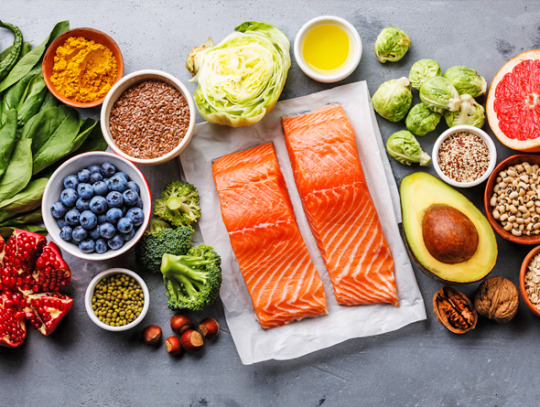
We all know the dangers and health risks of eating junk food, yet we fill our faces with the wrong things.
Mushroom
Not every mushroom is made equal. Crimini mushrooms can make perfect pasta toppers, but some species contain poison that can kill.
Tomatoes
The juicy, red fruit contains a poison, glycocaloid in its leaves, which causes stomach irritation, severe cramps, and anxiety. So clean with leaves and stems.
Rhubarb Leaves
Rhubarb can bake all kinds of delicious sweets, but the leaves are poisonous, causing shortness of breath, seizures, deteriorating kidneys and in some cases death.
Peanut
One of the most common allergies is peanuts. The most severe reaction is anaphylaxis, which can cause severe blockage of the airways, shock, and even loss of consciousness. It is dangerous that if left untreated can lead to death, so know your allergies before stepping anywhere near these babies or their addictive friend, Peanut Butter.
Raw meat and uncooked egg
Raw meat - which includes red meat, poultry and seafood - and uncooked eggs may contain Salmonella bacteria, which can cause gastroenteritis in humans. Salmonella poisoning can also lead to serious complications, such as bacteriogenesis (when Salmonella enters the bloodstream) that is life-threatening for people with weakened immune systems. So burn a flame under your flesh to avoid any risk.
Almond
This seed (no, it is not really a nut) may pack in many health benefits - but they are potentially poison-laden. Bitter almonds, while in their raw form, are loaded with cyanide. They have to undergo a special heat treatment (more than just roasting your DIY oven) to remove toxins.
Stone Fruit Seeds and Apple Seeds
Apples and stone fruits - cherries, plums, apples, pears, peaches and apricots - are nature's candies, but stay away from seeds (as well as bark and leaves). They contain amygdalin, a compound that produces cyanide. Much doses can lead to vomiting and dizziness, increased blood pressure, coma, kidney failure, and even death.
Fugu (puffer fish)
Puffer fish skin and some organs contain a highly toxic toxin that can cripple a human and even cause death.
Ackee
This pear shaped fruit needs to ripen completely, as it contains toxins that can cause death. The US Imports of raw fruit are banned in India, but you can buy it canned.
Kidney and Lima Beans
These beans are good for you, unless they are prepared incorrectly. Soak red kidney beans for several hours to remove leaks, which can kill cells in your stomach, and thoroughly cook and dry lima beans to get rid of the chemical compound, linamarin, which is converted to hydrogen cyanide. Can change.
Read the full article
0 notes